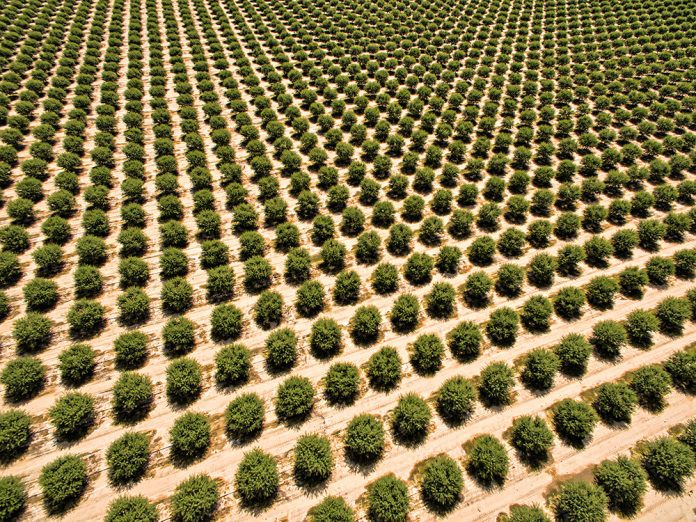In yet another blatant attempt to eliminate pesticides, the California Department of Pesticide Regulation (CDPR) has released their long-awaited Sustainable Pest Management (SPM): A Roadmap for California. The state claims this effort is “part of the State of California’s commitment to accelerating the transition away from high-risk pesticides toward adoption of safer, sustainable pest control practices.” And while there are items in their document that could help California agriculture move toward that goal, it is not the purpose of the Roadmap.
Let’s be clear: This Roadmap is a clear-cut recipe to ban most pesticides in California. In the opening paragraph, the document highlights the Roadmap’s “North Star.” It claims by 2050, pest management approaches in both agricultural and urban contexts in California will promote human health and safety, ecosystem resilience, agricultural sustainability, community wellbeing and economic vitality. The implementation of these approaches will help steward the state’s natural and cultural resources, enabling healthy lives for all and an abundant, healthy food supply for future generations. Their words, not mine.
This is followed immediately by the statement of the two primary goals of the Roadmap, as follows:
By 2050, California has eliminated the use of “Priority Pesticides” by transitioning to sustainable pest management practices.
By 2050, sustainable pest management has been adopted as the de facto pest management system in California.
So, what are “Priority Pesticides?” According to CDPR, Priority Pesticides, while not specifically identified individually, are defined as follows:
“Priority Pesticides,” which we are intentionally capitalizing, refer to pesticide products, active ingredients, and groups of related products within the context of specific product uses or pest/location use combinations that have been deemed to be of greatest concern and warrant heightened attention, planning, and support to expedite their replacement and eventual elimination. The criteria for classifying pesticides as “Priority Pesticides” includes, but is not limited to hazard and risk classifications, availability of effective alternative products or practices, and special consideration of pest management situations that potentially cause severe or widespread adverse impacts. The identification of these Priority Pesticides will be conducted by DPR under advisement of the multistakeholder Sustainable Pest Management Priorities Advisory Committee. Priority Pesticides are a subset of high-risk pesticides. We define “high risk” pesticides as active ingredients that are highly hazardous and/or formulations or uses that pose a likelihood of, or are known to cause, significant or widespread human and/or ecological impacts from their use.
When taking a closer look at what the Roadmap is considering, DPR further indicates that pesticides to be listed include groundwater contaminants, toxic air contaminants, restricted use products, carcinogens, endocrine disruptors, reproductive and developmental toxicants (Prop. 65), and environmental toxicants, such as those toxic to non-target pollinators, mammals, birds and fish. For tree nuts, this will be impactful, as glyphosate, abamectin, 1,3-D, sulfuryl fluoride, methyl bromide and phosphine are all products that are on one or more of these lists.
This is the most critical element of the Roadmap and the one that causes the most concern. When considering the most recent action by CDPR in eliminating chlorpyrifos, the development of alternatives was supposed to be done hand-in-hand. Unfortunately, chlorpyrifos was eliminated, and no alternative was developed or registered that proved to be equally effective. The agriculture industry remains concerned this will happen again and lose many more effective tools in combating invasive pests and weeds. In response, CDPR proposes to “prioritize and expedite the registration review process for alternatives to high-risk pesticides.” Only time will tell, but the agricultural industry will have to do what it can to press CDPR to follow through on this commitment and ensure a viable and effective alternative is on the market and available before removing a product from the marketplace.
In terms of assistance, two of the goals of the Roadmap include expanding research and development infrastructure and enhancing extension and education. This includes a specifically stated goal to “increase UC funding and staffing for SPM research, training and extension.” Further, the Roadmap calls for increased funding that incentivizes research, extension, outreach and technical assistance providers. This is something the agriculture industry has been requesting for some time and it will be very helpful.
In the long run, this appears to be another step in the state’s push to move agriculture to 100% organic. While no farmer wants to spray a single ounce of pesticide, it is necessary to produce the quality and quantity of food and fiber this state provides. One wonders what the premium for organic food and fiber would be if all acreage was organic, and how much more land, water and other valuable resources will be needed to make up for the lost production. Again, only time will tell. For now, this state continues its reckless path of overregulation, making California the most difficult land to farm in the world.











